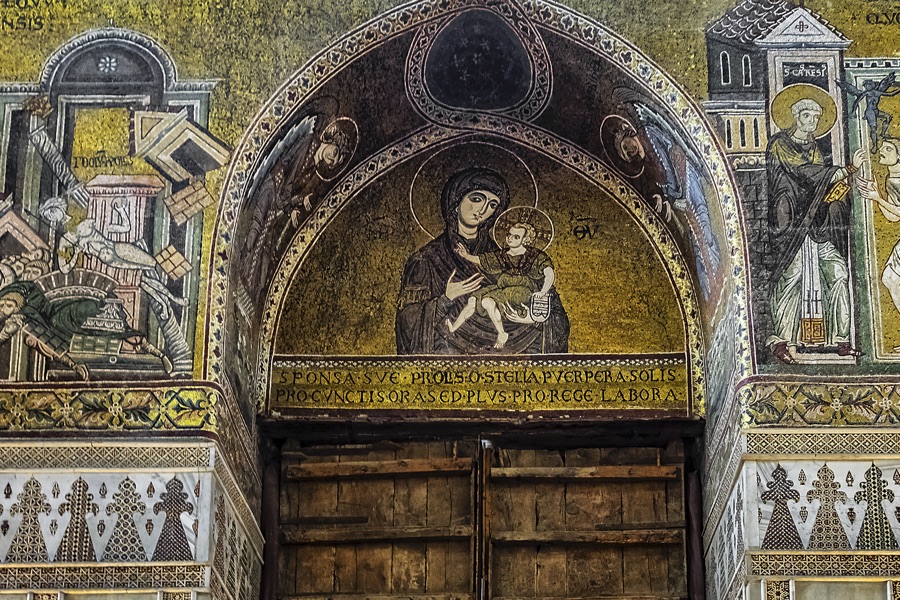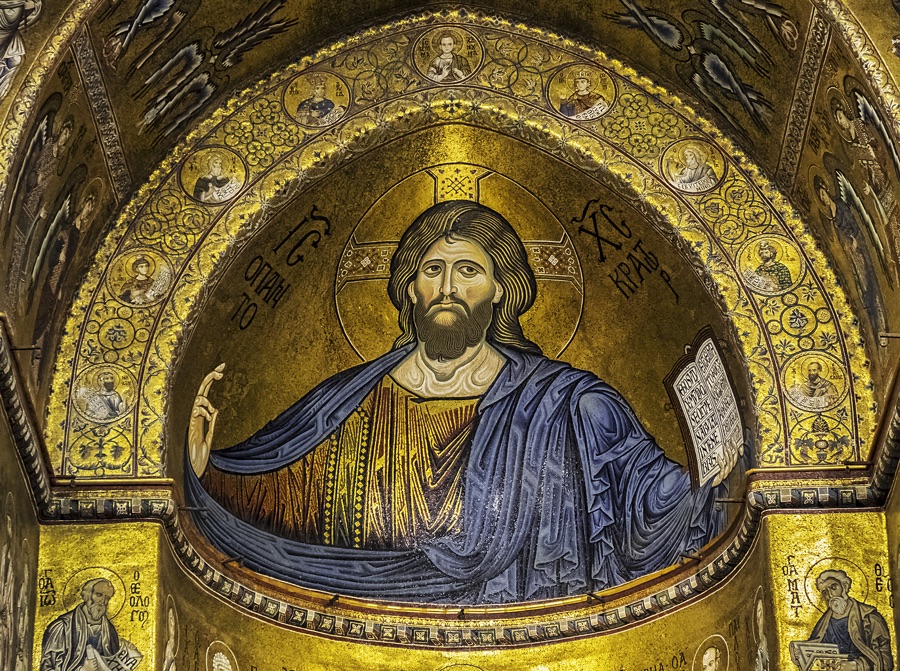 The mosaic of the Virgin Odigitria, located in the
lunette
The mosaic of the Virgin Odigitria, located in the
lunette
above the main entrance, concludes the journey towards Salvation, explained in the entire mosaic cycle that runs through the
aisles
, the
presbytery
and the
apses
of the Monreale Cathedral.
If the salvific centrepiece is the great image of the
Christ Pantocrator
, in the
apsidal dome
, Our Lady Odigitria, on the other hand, guides the pilgrims on their way back and lovingly accompanies them as they leave the church after participating in the liturgy.

The Virgin Hodegetria, from the Greek Oδηγήτρια meaning “she who leads/points the way”, is one of the most widespread images in Byzantine art.
In the Monreale mosaic, Mary wears a dark blue dress, a sign of her human nature, wrapped in a red cloak, with gold accents, a sign of her divine nature, for her assumption into heaven. The Virgin holds the Child, the way of Salvation, Light and Eternal Life in her arms. The blessing baby Jesus, wearing a gold-coloured robe and set within a jewelled nimbus, holds an open scroll in his left hand.
Under the icon, the following Latin inscription can be read: “Sponsa tue prolis stella puerpera solis pro cuntis ora sed plus pro rege labora”, which refers to the importance of prayer and work, as already expressed in the Benedictine rule with the phrase “ora et labora”, as well as mentioning the patron,
King William II
. The Virgin Hodegetria appears again in the 13th-century “Madonna Bruna” panel, also known as “Madonna Negra”.
The table, probably placed in the area of the presbytery, was later moved, around 1500, to the side altars. After the fire of 1811, it was placed in the sacristy and was later exhibited in the Diocesan Museum. After further restoration work, it has now returned to the Cathedral. The piece has a silver-plated background and pastille parts in relief. As in the mosaic, she points to the Child with her right hand. Mary is dressed in a blue tunic, wrapped in a purple cloak, adorned with beads and stars, embroidered with pearls on the shoulders and forehead, a symbol of Virginity. Jesus is in the act blessing, dressed in a white robe, a red tunic and a purple toga. In this image, he holds a closed scroll in his hands.